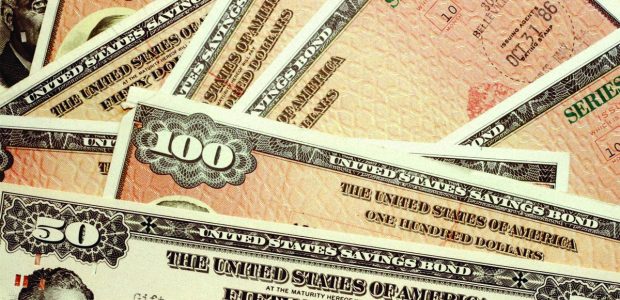Can I Ever Lose Money With a U. S. Government Bond?
With any type of bond or fixed-income investment, there are two types of risk to consider – default risk and interest rate risk. With U. S. Government bonds, there is practically no risk of default but there is interest rate risk.
Default risk
As the name implies, default risk is simply the risk that the issuer will not be able to live up to the obligation of paying interest as it is due and repaying the principal on the maturity of the bond.
Obligations issued by the United States government are backed by the full faith and credit of the government. They are recognized as one of the “safest” types of fixed income investments and are the standard against which all other bonds are measured for creditworthiness. As such, they are thought to have no, or almost no, risk of default. The chances are almost negligible that by owning a U. S. Government bond you would ever not get your interest or principal on the maturity of the bond.
Interest rate risk
This type of risk describes how the market value of the bond may fluctuate with changes in interest rates. U. S. Government bonds, like others, trade in the marketplace and are valued in that market. Their market values rise and fall with changes in interest rates. This is called “interest rate risk.” When interest rates rise, bond values fall. When interest rates fall, bond values rise.
When you think about this, it is logical. If a bond pays a 6% interest rate on its par value and the market changes with interest rates rising to 7%, that 6% bond is worth less. Investors will demand a market rate of 7% on all bonds available in the market. Consider the following:
Bond A – A $10,000 U. S. Government bond (30-year maturity) with a 6% interest rate (it pays $600 per year).
Bond B – A different $10,000 U. S. Government bond (30-year maturity) with a 7% interest rate (it pays $700 per year).
Bond B is more valuable than Bond A. It pays more.
The market for U. S. Government is very large and billions of dollars of these bonds are traded every day. If you bought a $10,000 long-term (30 years) U.S. Government bond when interest rates were 6% and rates increased to 7%, your bond will be worth less. How much less – about $1500 less. Why? Because new investors are going to demand to earn 7% on their investment.
If the maturity of a bond is in the near future, the reduction in the market value will be less because the new investor will consider the full repayment when calculating its value.
Summary
- S. Government bonds can be a very sound investment. There is almost no default risk and there is a very active market for these bonds if you wish to sell them before maturity. However, if interest rates change, the fair market value of the bonds will rise and fall in the opposite direction of changes in interest rates. To protect yourself against this interest rate risk, consider shorter-term U. S. Government obligations. You may have to accept a somewhat lower interest rate, but you will reduce your risk that the value of the bond may fall if interest rates rise.
The material provided on this Website should be used for informational purposes only and in no way should be relied upon for financial advice. Also, note that such material is not updated regularly and some of the information may not, therefore, be current. Please be sure to consult your own financial advisor when making decisions regarding your financial management.





